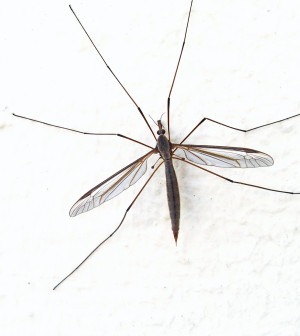- Skip Storing This Everyday Product in the Fridge Door
- Green Tea + B3 Pairing May Boost Brain Health
- Navigating Your Midlife Crisis: Embracing New Possibilities
- City Raccoons Showing Signs of Domestication
- Mapping the Exposome: Science Broadens Focus to Environmental Disease Triggers
- One Week Less on Social Media Linked to Better Mental Health
- Your Brain Changes in Stages as You Age, Study Finds
- Some Suicide Victims Show No Typical Warning Signs, Study Finds
- ByHeart Formula Faces Lawsuits After Babies Sickened With Botulism
- Switch to Vegan Diet Could Cut Your Greenhouse Gas Emissions in Half
Vaccinating Schoolkids Cuts Flu in Communities: Study


Giving flu shots to schoolchildren also protects others, a new study finds.
“The effect of school-based vaccination was profound, both on the students and on the community,” lead author Cuc Tran, a doctoral student in public health at the University of Florida, said in a university news release.
When half of the children aged 5 to 17 in Alachua County, Fla., received seasonal flu vaccinations through a school-based program, the flu rate in the entire age group fell by 79 percent.
And the flu rate among children aged 4 and younger decreased by 89 percent, even though they weren’t included in the vaccination program. Among all non-school-aged residents in the county, the flu rate declined 60 percent, the researchers found.
The study was published Dec. 9 in the journal PLOS ONE.
The findings may help communities determine how best to target funding, doses of flu vaccine, and awareness campaigns to protect the greatest number of people from the flu, according to the researchers.
Flu kills thousands of Americans each year and costs $10.4 billion in hospitalization and outpatient visits each year, according to the U.S. Centers for Disease Control and Prevention.
The researchers said there are a number of reasons to make schoolchildren the focus of flu prevention. They tend to get sick longer and are more likely to spread the flu virus and infect others due to their poor hygiene habits and the fact they tend to have contact with more people than most adults, the researchers noted.
This season’s flu shot isn’t a good match for all the circulating strains of influenza. Still, infectious-disease experts are urging people to get their flu shot even though it may not be as effective against the mutated H3N2 strain.
“Even the partial protection is worth it because of the number of deaths and number of hospitalizations that can occur from H3N2,” said Dr. Carolyn Bridges, associate director of adult immunizations at the CDC’s National Center for Immunization and Respiratory Diseases.
Flu seasons that feature widespread H3N2 infections can be dangerous. H3N2 viruses were predominant during the 2012-13, 2007-08 and 2003-04 flu seasons — the three seasons with the highest death rates in the past decade, CDC officials noted. In the past, death rates from H3N2 have been more than double that of other flu strains.
More information
The U.S. Centers for Disease Control and Prevention has more about children, the flu, and the flu vaccine.
Source: HealthDay
Copyright © 2025 HealthDay. All rights reserved.










